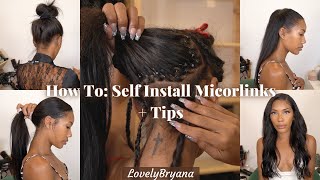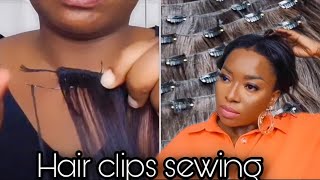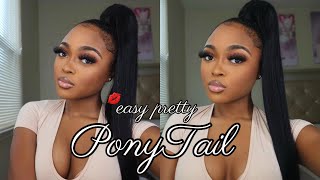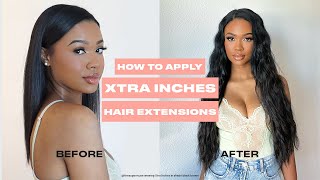Learn How To Cut A Shag Haircut With Scissors The Easy Way
Follow along as JPMS educators Lucas Doney and Clinton Norris demonstrate their method to achieving the perfect shag haircut with scissors.
CONNECT WITH US
Instagram: https://www.instagram.com/paulmitchell...
Facebook: https://www.facebook.com/PaulMitchellH...
Subscribe to our other YouTube Channel: @PaulMitchell
Welcome back everyone, lucas, stoney, international trainer for john paul mitchell systems, and i'm here with my name - is clinton norris and i'm an educator for john paul mitchell systems as well. Today we are talking about haircuts um. I think that in our world, as hairdressers, there is this continuous debate on what's the right tool, you know, i think that our industry is slightly divided. We have the razor hair cutters over here and the scissor hair cutters over here and the people that use flat irons over here and people that love round brushes over here. Whatever the case may be, today, we're talking specifically hair cutting yeah and why you would choose a certain tool for a certain end result um, and we were lucky enough to create a couple of looks today. We actually, our goal was to create two similar looks as far as haircuts go same sectioning and same end result goal, but get there with different tools. Um clinton tell me about what what we had going on today, so i think it's so interesting. Seeing two different things, but they were created two different ways: you have this complete. You know continuous common thread through both of them, but there was like a difference between both of those different feel. There was a different like purpose between behind both of those things. So what we wanted to do was take a stronger tool, create a strong checkable end result, and then we wanted to create something with a little more feel to it, something that you could actually glide through create some freedom internally, within the shape of the haircut. We decided to be as strict as possible with our thought process: um sectioning. We thought at every piece of the haircut and we wanted to create something that was useful. We wanted you guys to see something that you guys could watch take to right behind the chair and start making more money or giving you more versatility in the things that you do, and i know that with our examples and what we worked on today, i chose To cut my haircut with a razor, you chose to cut yours with a scissor yeah. Why do you feel, like you, have a strong, stronger relationship with a pair of scissors versus a razor? I think one of the things i again like you talked about earlier. When i first went to hair school. It was frowned upon to use anything besides a scissor. I think, like we got clearest. Oh yeah, you use, you can travel the world with scissors in a cone. You know what i mean and so and that's still possible. It'S totally true. I mean i do it. You know what i mean. I don't have any other tools. You know, there's a there's. A previous video that we made about you know what's in our bag and if you watch that there's not a razor in my back, you know there's two of mine and it's not that i don't love that tool. You know. Looking back, you know hindsight's. 20. 20. Looking back on my experience, i'm super grateful because someone pushed me to the limits of what was comfortable. I remember being frustrated and i didn't have the ability to control it and the reason i think that i was frustrated is because a scissor creates such a strong end result. If it's off it's off and there's no like you know, if two didn't go to one, you saw it when you blow-dried it, it was there and then you had to fix it somehow. So if everything didn't line up, you knew it. So i think i was frustrated at the beginning, but i was so glad that someone pushed me there because i think it's really easy. You know learning from you and watching you cut with a razor. I think i have you know somewhat of an advantage because i was like you're like you have an advantage. You had to binge because you were focused on a scissor in school, so that transition was a lot easier. Now i think if you were to use a razor and then try to go to a scissor, i think that would be really difficult. It'S always easier to throw a different tool on top of using a scissor all right. What'S up guys welcome to our haircut here now, as we get into this, i'm going to separate this into these four bigger segments, i'm doing something down the center from the frontal bone, all the way down to the nape which you'll see in a second and then Apex to right behind the ear, this allows me to organize the hair and be able to make really good decisions where the density changes and also the hairline, with a lot more real estate in the back to work with. So this gives me a really good understanding of uh where the hair lives and how it's gon na react now for section one, i'm starting here over the crown, i'm elevating it straight out of the crown which is incredibly important to me. I don't want this to have any kind of weight line in it. I want to be seamless, shaggy soft movable adaptable and i worked on my second knuckle, not for control, but just because the bone structure is changing, so in addition to control, it also allows me to work in really small adjustable pieces, so i can actually follow the Bone structure and as i get down, i am walking this a little bit lower, so i'm now using the bone structure as reference 90 from the apex 90 from the crown. This is about 90 from the low crown or high occipital, and then my last section down here, i'm going to take from the bottom hairline. I really want to make sure i scoop all of this up and i don't have anything left because later on, it is going to affect the overall end result, because i haven't cut an outline on this shape. Yet i literally started working interior all the way to the exterior at this moment. So i want a lot of control, because this is going to dictate what the actual outline looks like so, instead of going through traditionally and cutting an outline, i've decided to work the interior links and let that dictate what the exterior links look like. I love that, and i mean following the head, shape to a certain degree, but also you're, creating shorter internal layering than you are towards the outline right gives you a bit of safety around the edge yeah yeah absolutely, and that way i don't have this really strong. Strong outline that i have to go back through and point cut and make softer. So as i'm working i'm using these vertical sections, it's allowing me to control the internal links and the external links and be really confident about that and they're over directing backwards to the previous. So i'm pulling away from the links at the front. So that way, we have a shorter layer on the back getting longer to where it gets weaker over the front now site number two, which is the doll's left side, i'm actually pushing my over direction. Now the previous i was pulling it now, i'm pushing it away from me towards the center. Now you have an opportunity to make this as long as you want in the front by increasing your over direction or you could work like i'm working where i'm just over. Directing back to a previous, which gives me a really subtle growth and length towards the front hairline, i think that is i know for me when i do haircuts like this. It'S a little bit easier to manage, cutting the hair shorter for longer and cutting kind of downhill that way. Yeah. That way, you see the interior. You see, the exterior working from outline to interior is pretty scary because you don't really know where you're ending up now. Here for the front, this is from a profile view. I snagged just a little bit of a clue from section number one over the crown and i'm utilizing that as a clue to tell me how long i should make the front um lucas and i together, we did the same haircut with two different tools. So i'm using a scissor here, so i want to be able to make this connect to the back similar to what lucas's haircut is. I want to tell the same story. I don't want it to be two separate haircuts from front to back, so i'm utilizing that as a clue and then here you can tell i'm taking a lot of time with section number one, because i want this to follow the uh bone structure, all the way To the front hairline uh, instead of just kind of rushing through it, this section number one is the most important section yeah you have like section number one in the back now you got section number one in the front yeah. I think those are the two most important ones, and so here just kind of speeding this up, i'm doing something similar that i did in the back, but i'm taking this forward towards the front hairline or towards the face that way. Again, it's getting longer towards the back really being cautious with this haircut, because i think layering is something that we get incredibly comfortable with, because it's the most popular haircut in america, and so we get really careless that you know the the less we have to worry About the less we worry about it, and that just is like a recipe for sometimes disaster, so on site number two, i'm now again like i did in the back, i'm pushing section two to one again. If we're using a number system, section two goes to one three's gon na go to two four, two, three five to four um: again, you have an opportunity here to make it a stationary guide with section number one that way it gets increasingly longer towards the back Of the bone structure - and i think that slight bit of over direction just gives you a little bit more protection as you reach that kind of weak point over the ear. So that's kind of giving you a little bit of safety there as well. That'S absolutely a danger, though that's where most people like cut a hole or whatever they call a hole over the ear and then here's my like end result before it gets blow-dried. I do like to look at it when it's wet, so i can understand where it's going to fall and then i'm taking these sections from the apex to parietal ridge. That way, i can allow this to fall over different parts of the bone structure, instead of taking the same sections that i did for the haircut and then through here. What i really want is a lot of space, so when this drops it looks pretty seamless - and you can see here - some of the space that's internally put into those layerings and then i'm putting a little bit of super clean light on it. That way, it gives a little bit of texture, some movement. You can see all the work that i did, instead of it being completely ironed straight and then we'll do a little bit of an end result here, for you,





Comments
gttnz gtnhjv: que QUINZAA.Monster encantan tus videos. Bendiciones hermosa Celina que Dios te cuide donde quiera los mortalesk abian apreciado tan hermosa mujer
Clinton Norris: ♥️♥️♥️